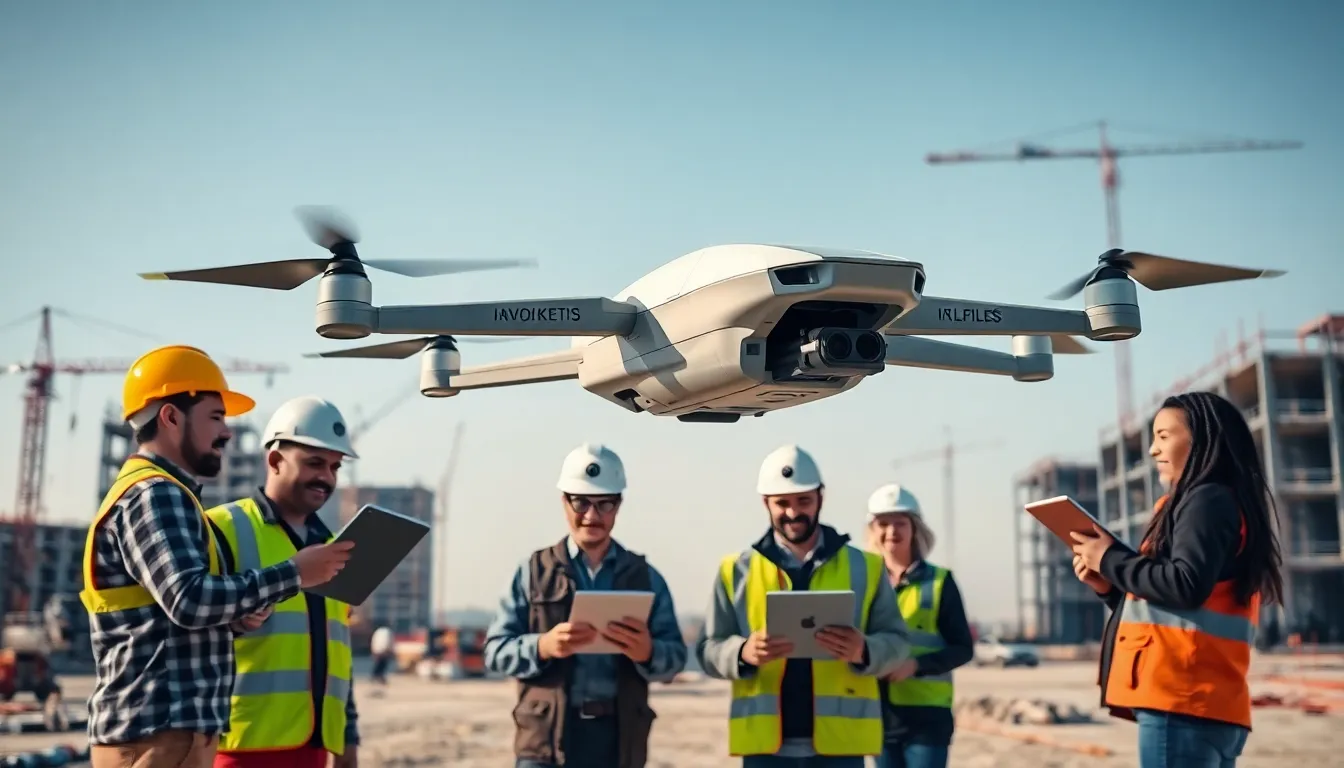In a world where efficiency reigns supreme, worker drones are swooping in to save the day, literally. These robotic marvels are not just for delivering your late-night pizza anymore. They’re shaping industries, transforming labor with a technological twist, and maybe even fighting off a few overworked humans in the process. What if your job could be done faster, cheaper, and without the annoying 9-to-5? Let’s jump into the drone revolution and discover how these airborne helpers are changing the game for everyone.
Table of Contents
ToggleWhat Are Worker Drones?

Worker drones, often referred to as industrial or professional drones, are unmanned aerial vehicles (UAVs) designed specifically for labor-intensive tasks. These flying machines come equipped with advanced technology, such as cameras, sensors, and artificial intelligence, enabling them to perform tasks ranging from construction to delivery. They don’t take coffee breaks, don’t complain about long hours, and most importantly, they never miss a deadline. It’s an evolution of the workforce where efficiency meets innovation, resulting in a synergy that reshapes how work gets done.
These drones typically operate autonomously, meaning they can navigate pre-set routes and complete their missions without human intervention. But while they may appear to be merely futuristic gadgets, they harbor the potential to revolutionize various sectors. The question remains: How do they stack up against traditional labor?
Types of Worker Drones
There are several types of worker drones, each tailored for specific industries and functions. These include:
Agricultural Drones
Used in farming, these drones assist with crop monitoring, soil analysis, and even spraying pesticides. Imagine a drone flying over a vast field, collecting invaluable data on crop health without any human needing to step foot in the mud.
Delivery Drones
Designed to transport goods quickly and efficiently, delivery drones are making headlines with their ability to reduce shipping times. Whether it’s emergency medical supplies or your favorite snack, these drones can get items to you faster than a delivery truck reevaluates its GPS.
Construction Drones
These workers map construction sites, conduct inspections, and monitor progress in real-time. They can identify structural issues before they become problematic, making them essential for modern construction.
Surveillance Drones
Primarily used for security, these drones monitor large areas and can provide crucial data to law enforcement or private security firms. They enhance safety measures without the need for a human patrol.
Truly, workers come in all shapes, sizes, and now, even in the form of flying robots.
Benefits of Using Worker Drones
The benefits of employing worker drones are as impressive as their technology. Here are some compelling advantages:
Increased Efficiency
Worker drones can complete tasks faster than their human counterparts. Thanks to their ability to operate around the clock, they maximize productivity. Think of them as the tireless worker you’ve always wanted on your team.
Cost-Effectiveness
Employing drones can significantly reduce labor costs. Less money spent on human workers means more funds available for innovation and growth. If companies can save on salary expenses, that could lead to lower prices for consumers.
Enhanced Safety
In hazardous environments, worker drones provide a safer alternative. Instead of sending human workers into potentially dangerous situations, think tall construction sites or isolated emergency areas, drones can take on those risks.
Data Collection
With advanced sensors and cameras, drones collect vast amounts of data quickly and accurately, making them invaluable for industries requiring real-time information. From environmental monitoring to agricultural health assessments, they gather data that informs better decision-making.
The efficiency, cost savings, safety features, and data capabilities all contribute to making worker drones a top choice for modern labor needs.
Challenges and Limitations of Worker Drones
Even though their numerous advantages, worker drones also face challenges and limitations:
Regulatory Restrictions
Drone usage is heavily regulated in many regions. To operate legally, companies must navigate complex regulations covering airspace and privacy. These restrictions can hinder widespread adoption and deployment.
Technical Limitations
While technology continually improves, issues such as battery life, payload capacity, and the inability to operate in adverse weather conditions still limit drone capabilities. A drone might not be your best bet during a thunderstorm, after all.
Job Displacement Concerns
The rise of worker drones raises concerns about unemployment for traditional workers. As drones take on more tasks, there’s a fear that human jobs will decrease, leading to potential societal issues. Striking a balance where technology complements human labor is essential for a harmonious future.
Initial Investment
The upfront cost of purchasing drones and training personnel can be substantial. Many businesses hesitate to invest, fearing a lack of immediate return on investment.
Real-World Applications of Worker Drones
Worker drones are already having a considerable impact across various industries. Here are some notable real-world applications:
Agriculture
Farmers are utilizing drones to analyze crop health, identify pest infestations, and monitor irrigation systems. This level of insight enables them to take timely actions, so optimizing yields.
Infrastructure Inspection
In construction and maintenance, drones assist in inspecting bridges, tall buildings, and power lines. By capturing high-resolution images and surveys, they help catch maintenance needs before they escalate into failure points.
Delivery Systems
Companies like Amazon are piloting drone delivery services to expedite shipping processes significantly. Imagine purchasing a book online in the morning and having it land on your doorstep by lunch.
Disaster Response
Drones play a critical role in disaster response. They can quickly assess areas affected by natural disasters, enabling search and rescue teams to identify survivors and navigate hazards.
Future Prospects for Worker Drones
The future of worker drones is brimming with possibilities. As technology continues to advance, we can expect:
Increased Integration
We’ll likely see broader integration of drones into everyday operations. From warehouses to hospitals, adapting drones for varied tasks will become commonplace.
Enhanced Autonomy
The growth of artificial intelligence will enhance the autonomy of worker drones. They’ll become even more capable of making real-time decisions, potentially leading to processes with little need for human oversight.
Supply Chain Modernization
Drones could revolutionize supply chains, reducing dependency on ground transportation. This could lead to quicker deliveries and lower emissions, signaling a positive shift for the environment.
Collaborative Robots
We may witness the rise of collaborative robots (cobots) that work alongside drones, creating a dynamic workforce that uses the strengths of both technologies.









